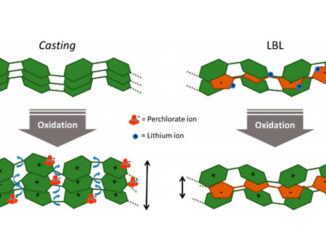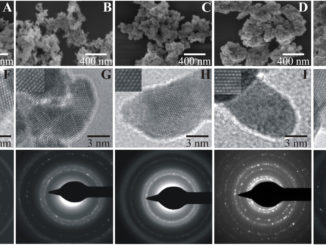
Writers: Beatriz A. Vessalli and Cecilia A. Zito and Tarcísio M. Perfecto and Diogo P. Volanti and Talita Mazon
Keywords: Nanocomposites; Sensors; Acetone; Zinc oxide
Abstract: Graphene-based composites have emerged as gas sensor due to the possibility to obtain higher surface area with additional functional groups. In this paper, ZnO nanorods (ZnO-NR) with controlled size and morphology were grown via chemical bath deposition in mild temperature (90 °C) over gold interdigital tracks deposited on an alumina substrate. Furthermore, it was also possible to obtain by the same method composites with graphene oxide sheets below ZnO-NR structures (GO/ZnO-NR) or ZnO-NR between GO sheets (GO/ZnO-NR/GO) when GO is placed in the bath during the growth of GO/ZnO-NR. The samples were characterized by Raman spectroscopy, scanning electron microscopy, and energy dispersive X-ray spectroscopy. These structures were tested as sensors of volatile organic compounds (VOCs), such as acetone, benzene, ethanol and methanol in the concentration range of 10–500 parts per million (ppm). It was found that the optimum working temperature of all sensors was 450 °C. The GO/ZnO-NR/GO composite showed better selectivity due to GO functional groups. In the case of our well-designed sensors, we found that the dominant oxygen species (O2-) on ZnO-NR surface were responsible for the sensors response. These findings offer a new viewpoint for further advance of the sensing performance of one-dimensional ZnO/GO nanocomposites VOCs sensors.




